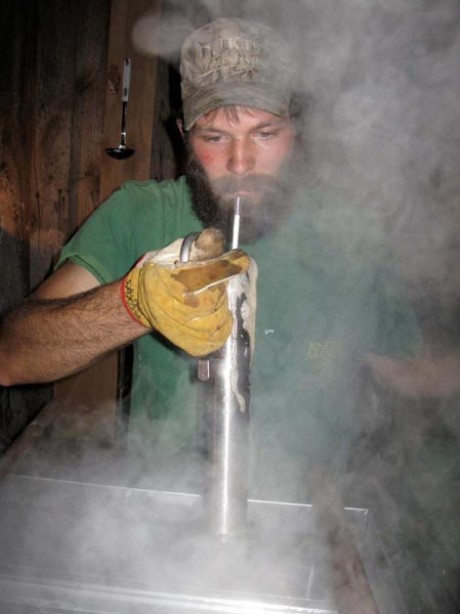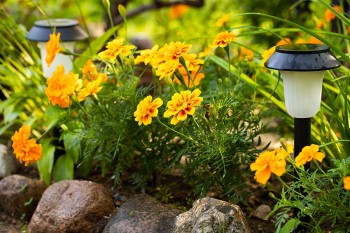Sap’s Rising
North Carolina maple syrup makers tap a niche market
By Carla BurgessDoug Munroe will never forget the winter day in 1976 that he scoped out the Ashe County farm where he now lives. Walking the snow-covered landscape with the owner, he was consumed by the stunning mountain vistas. The property had a 40-foot waterfall. Tulip poplars and sugar maples covered the steep slopes. He knew he was home.
Munroe had no inkling then that he'd one day tap his sugar maples to make syrup. But over time, he gradually thinned around the maples. Meantime, he raised Christmas trees and truck crops for the local market, started a nursery and worked as a landscaper. It was 2005 before he tapped the first sugar maple.
For a few years he made small batches of syrup, collecting and hauling the sap by the bucket to his back yard where he boiled it in pans over a wood fire. Munroe now relies on a sophisticated gravity-fed system to collect sap. Some 250 taps connect to tubes and pipes, about a mile in all. The sap flows downhill to the "sugar shack" that he built of his own tulip poplar and locust. Last year, a $9,700 grant from the Tobacco Communities Reinvestment Fund allowed him to buy a commercial evaporator three storage tanks and a filtering box. He sells syrup in 8-ounce and 12-ounce bottles under the brand Waterfall Farm.
Munroe is entering a business primarily associated with New England and eastern Canada. The northwestern North Carolina mountains are the southernmost native range of the sugar maple. The sparseness of the trees here, along with a steep terrain that makes collecting by hand impractical, has limited the potential for large-scale production.
About 80 miles southwest of Munroe's farm, another North Carolina maple syrup maker is also tapping the market. John Swann of Maple Creek Farm in Yancey County has scads of sugar maples in about 85 acres of woods. He started tapping the trees five years ago. Like Munroe, he invested in a gravity-fed system, with about three miles of line so far. He has 500 taps in 400 trees. The best run he's had in a season is about 100 gallons of syrup, the worst about 20. At a retail price of $168 per gallon, Swann says his break-even point is about 30 gallons a year. It takes 45 gallons of sap to make 1 gallon of syrup. It takes up to 30 years for a tree to grow big enough for tapping — 10 to 12 inches in diameter.
An ample harvest depends on a relatively short period of rapidly fluctuating temperatures. In winter, trees are dormant, and sap stays in the roots. As spring approaches and daytime temperatures rise, so does the sap, which flows up into the crown. In an intermittent freeze-thaw cycle —an ideal mix is in the 20s at night and 40s in the day — the sap circulates. "That flow going up and down in the tree is what produces the pressure that pumps the sap out," says Swann.
This is when maple madness begins. The taps are inserted and connected to the tubing. The sap flows down the mountain to the holding tanks and then goes into the evaporator inside the sugar shack. Then it's a round-the-clock job to feed the fire and keep the liquid at a constant temperature. The water is boiled off until the syrup has a sugar concentration of 66 percent. Then the syrup is filtered and bottled by hand. Sap collection can go on for as long as six weeks, up until buds break and the sap turns milky and develops an off flavor.
Because their production is limited, Swann and Munroe sell only locally, direct to customers. Swann sells his maple syrup only from the farm and by appointment until it runs out. Munroe takes advance orders from neighbors and sells any extra at the farmer's market in West Jefferson.
-
Share this story:




